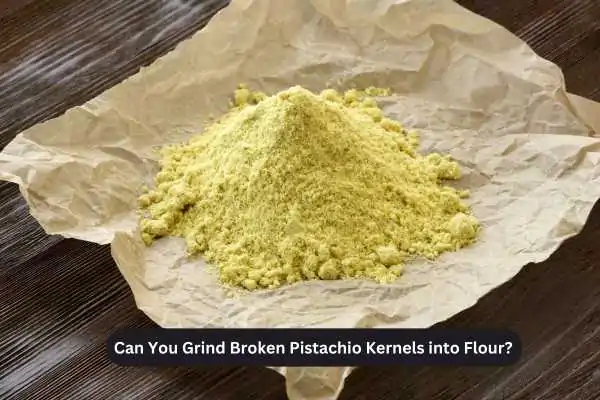When it comes to alternative flours, many home bakers and health-conscious consumers in the UK are turning to nuts for their nutritional benefits and unique flavour profiles. Among these, pistachios stand out for their vibrant colour, distinct taste, and versatile use in recipes. But what happens when you’re left with broken pistachio kernels? Can you grind them into flour? The short answer is yes — and here’s everything you need to know.

Why Use Broken Pistachio Kernels?
Broken pistachio kernels are often overlooked, especially when they’re not visually appealing enough for garnishing desserts or using as snacks. However, these bits retain all the flavour, nutrients, and fat content of whole pistachios. Rather than letting them go to waste, grinding them into flour offers an eco-friendly and cost-effective way to make the most of your pantry staples.
In the UK, where reducing food waste is a growing concern, repurposing broken nuts into flour supports both sustainability and economical cooking.
Is Pistachio Flour the Same as Almond Flour?
Pistachio flour is similar in texture and function to almond flour, but with a distinct flavour and colour. It’s naturally gluten-free, making it an excellent choice for coeliacs or those on a gluten-free diet. However, pistachio flour tends to be a bit denser and oilier than almond flour, so recipe adjustments may be necessary.
That said, it works beautifully in cakes, macarons, cookies, tarts, and even savoury dishes like crusts for meats or additions to salad dressings.
How to Grind Broken Pistachio Kernels into Flour
Grinding broken pistachio kernels into flour is straightforward if you follow the correct method and use the right equipment. Here’s a step-by-step guide:
1. Dry the Kernels
Moisture is the enemy of nut flour. Ensure your broken pistachios are completely dry. If they feel slightly oily or damp, spread them on a baking tray and toast them in the oven at 150°C (300°F) for 10–15 minutes. Let them cool before grinding.
2. Use a High-Speed Blender or Food Processor
For best results, use a high-powered food processor or a spice grinder. A standard blender may over-process the nuts and turn them into pistachio butter rather than flour.
3. Pulse, Don’t Blend
To maintain a flour-like texture, pulse in short bursts rather than blending continuously. This prevents the pistachios’ natural oils from releasing too quickly and clumping the mixture.
4. Sift for Consistency
After grinding, sift the flour through a fine mesh sieve to separate any larger pieces. These can be reground or reserved for texture in other recipes.
5. Store Properly
Because nut flours contain oils, they can go rancid. Store your pistachio flour in an airtight container in the fridge or freezer to extend its shelf life.
Benefits of Using Pistachio Flour
Using pistachio flour offers more than just a unique flavour. It’s also:
-
Nutrient-rich: High in protein, healthy fats, fibre, and antioxidants.
-
Low-carb: Suitable for low-carb and keto-friendly baking.
-
Naturally gluten-free: Ideal for those with gluten intolerance.
-
Aromatic and colourful: Adds a distinctive aroma and green hue to baked goods.
These characteristics make it especially appealing to modern UK home bakers looking to create artisanal or health-conscious treats.
Best Recipes for Pistachio Flour
Pistachio flour lends itself to a wide range of recipes. Here are a few ideas to get started:
-
Pistachio Financiers – Light, nutty French cakes that highlight the flavour of the flour.
-
Gluten-Free Pistachio Shortbread – Perfect for afternoon tea or gifting.
-
Pistachio Macarons – For a colourful twist on the classic.
-
Nut-Crusted Chicken or Fish – Combine with herbs and breadcrumbs for a savoury coating.
-
Pistachio Biscotti – Adds depth and crunch to your coffee-time biscuit.
Things to Keep in Mind
While pistachio flour is wonderfully versatile, it’s important to note a few key points:
-
Cost: Pistachios are one of the more expensive nuts, so using broken kernels is a great way to make the most of your investment.
-
Recipe Adjustments: Because of its higher fat content, pistachio flour may require tweaks to butter or oil quantities in traditional recipes.
-
Allergens: Always clearly label baked goods made with nut flours, especially if serving to guests or selling commercially.
Conclusion
Yes, you absolutely can grind broken pistachio kernels into flour — and you should. It’s a smart, sustainable way to reduce waste and add rich flavour and nutrition to your cooking and baking. Whether you’re a professional pâtissier or a home baker experimenting with gluten-free options, pistachio flour offers a premium alternative with unique culinary potential.
So next time you come across a bag of broken pistachios in your cupboard, don’t toss them — grind them, bake with them, and enjoy a little taste of green luxury.

